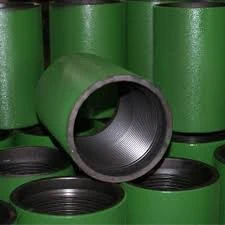- Afrikaans
- Albanian
- Amharic
- Arabic
- Armenian
- Azerbaijani
- Basque
- Belarusian
- Bengali
- Bosnian
- Bulgarian
- Catalan
- Cebuano
- Corsican
- Croatian
- Czech
- Danish
- Dutch
- English
- Esperanto
- Estonian
- Finnish
- French
- Frisian
- Galician
- Georgian
- German
- Greek
- Gujarati
- Haitian Creole
- hausa
- hawaiian
- Hebrew
- Hindi
- Miao
- Hungarian
- Icelandic
- igbo
- Indonesian
- irish
- Italian
- Japanese
- Javanese
- Kannada
- kazakh
- Khmer
- Rwandese
- Korean
- Kurdish
- Kyrgyz
- Lao
- Latin
- Latvian
- Lithuanian
- Luxembourgish
- Macedonian
- Malgashi
- Malay
- Malayalam
- Maltese
- Maori
- Marathi
- Mongolian
- Myanmar
- Nepali
- Norwegian
- Norwegian
- Occitan
- Pashto
- Persian
- Polish
- Portuguese
- Punjabi
- Romanian
- Russian
- Samoan
- Scottish Gaelic
- Serbian
- Sesotho
- Shona
- Sindhi
- Sinhala
- Slovak
- Slovenian
- Somali
- Spanish
- Sundanese
- Swahili
- Swedish
- Tagalog
- Tajik
- Tamil
- Tatar
- Telugu
- Thai
- Turkish
- Turkmen
- Ukrainian
- Urdu
- Uighur
- Uzbek
- Vietnamese
- Welsh
- Bantu
- Yiddish
- Yoruba
- Zulu
casing pup joint
Understanding Casing Pup Joints Essential Components in Oil and Gas Operations
In the oil and gas industry, the efficient and safe transportation of hydrocarbons from the reservoir to the surface is of paramount importance. Among the various components contributing to this process, casing pup joints play a crucial role. These specialized pipe segments are essential for ensuring the integrity and efficiency of well operations. This article will explore the significance of casing pup joints, their manufacturing process, applications, and the advantages they bring to drilling operations.
What Are Casing Pup Joints?
Casing pup joints are short sections of pipe used in the casing string of oil and gas wells. They are typically fabricated from high-grade steel and come in various lengths, usually ranging from a few feet to several feet, depending on the specific requirements of the well. These joints are designed to connect larger casing pipes and can be utilized in both surface and downhole operations. The primary purpose of casing pup joints is to make precise adjustments to the casing string, allowing for better control during the drilling process.
Function and Applications
Casing pup joints serve several essential functions in well construction and operation. One of their primary uses is to ensure that the casing string accurately matches the wellbore's depth and curvature. As drilling progresses, the operator may encounter unexpected geological formations that necessitate adjustments to the casing. Casing pup joints provide the flexibility to extend or shorten the casing string in response to these challenges.
Additionally, pup joints are instrumental in managing the pressure within the casing. In the oil and gas industry, maintaining the correct pressure levels is critical for preventing blowouts and ensuring the safety of drilling operations. Casing pup joints aid in creating a secure seal, which is vital for maintaining pressure control.
These joints are also used in various applications beyond standard casing operations. For example, they may be employed during well completion, for installing production tubing, or to facilitate the connection of other components such as tubing hangers and packers. Their versatility makes them invaluable in various stages of the drilling and production process.
Manufacturing Process
casing pup joint

The manufacturing of casing pup joints involves several steps to ensure they meet the strict quality and safety standards required in the industry. The process begins with selecting high-strength steel alloys, which provide the necessary mechanical properties to withstand the harsh conditions encountered in oil and gas wells. The selected materials are then subjected to various forming and welding processes to create the pup joints.
Once fabricated, each pup joint undergoes rigorous testing, including pressure tests and non-destructive testing methods such as ultrasonic or radiographic inspections. These tests are critical to ensure that the joints meet the required safety standards and performance specifications. Only after passing these tests are the pup joints certified for use in drilling operations.
Advantages of Casing Pup Joints
Casing pup joints offer several advantages that enhance their value in drilling operations. Firstly, their customized lengths provide flexibility, allowing drilling engineers to optimize the casing string for specific well conditions. This adaptability can lead to more efficient drilling and completion processes, ultimately reducing costs and minimizing downtime.
Secondly, the use of high-strength materials ensures that casing pup joints can withstand the extreme pressures and temperatures encountered in deep wells. Their reliability contributes to the overall safety and stability of the well, protecting not only the equipment but also the personnel involved in the operation.
Finally, casing pup joints facilitate quick and easy installation and removal, which is particularly important in dynamic drilling environments. This ease of use enhances operational efficiency and allows for timely adjustments to the well as conditions change.
Conclusion
Casing pup joints are a vital element of oil and gas drilling operations, providing both functionality and safety. Their ability to adapt to changing circumstances in the wellbore makes them indispensable for drilling engineers and operators alike. As technology advances and the industry continues to improve its methods, the significance of casing pup joints will undoubtedly remain a cornerstone of effective and safe oil and gas extraction.
-
Tubing coupling plays a significant role in the chemical industryNewsApr.03,2025
-
The Importance of Tubing Crossover in Various Industrial FieldsNewsApr.03,2025
-
The characteristics and important role of Tubing Pup JointNewsApr.03,2025
-
Characteristics and functions of Pup jointNewsApr.03,2025
-
Characteristics and Functions of Pup Joint PipeNewsApr.03,2025
-
Application of Coupling Casing in Various ScenariosNewsApr.03,2025







